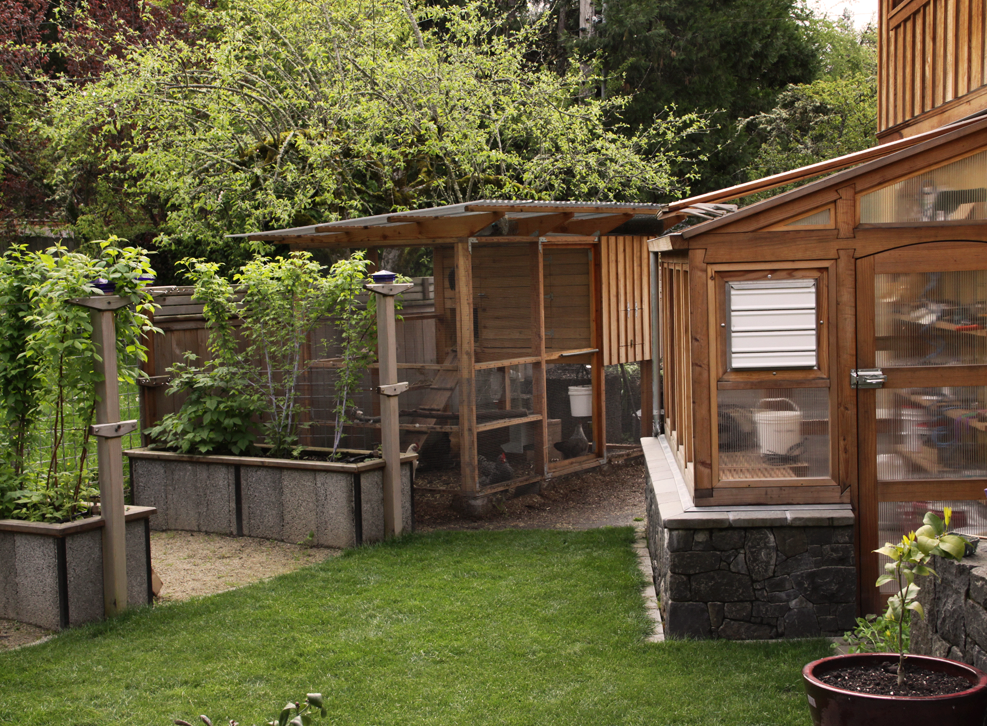
What is truly special about growing food in our gardens? Living in Eugene, Oregon, we can easily find locally grown, delicious produce from farmers markets or CSA’s. Perhaps we feel the magic of food harvested from our gardens because the process recalls the very origins of gardens. The idea of a garden began as a place set apart, a place where we could protect and cultivate our own productive plot of land.[1] Our landscape designs started out of the need for the practical, but became integrated with the ornamental, becoming a synesthesia of the senses.
We relish the experience of producing food in our own gardens. Think of all the sensations and memories that bubble to the surface when plucking a ripe tomato from the vine. The sunned skin of the tomato is pleasantly warm to the touch, the vibrant colors sing to our eyes, the smell is intoxicating, and the taste! The taste is out of this world.
With all these temptations, we still may need to protect our gardens from hungry visitors. Practicality necessitates the creation of physical barriers between spaces. But how does an effective enclosure translate to visual form? Do we want to create a permeable barrier that we can see through freely, or do we want a something more solid? What feelings do a rustic stone wall evoke versus those of a post and rail fence? How do we create an enclosure without chopping up a landscape into disconnected chunks?
It’s important to contemplate the way we transition between the space that is within the enclosure and the space without. A garden gate signals the moment of threshold. We physically touch the gate as we open and close it. Does the action require a strong push or does it swing freely on its hinges? A gate can communicate its grandeur – announcing itself proudly – or it can rest quietly, while dutifully and excellently performing its purpose.
Aside from keeping unwanted visitors out, enclosures may also create alluring microclimates. Certain materials more readily capture and reflect the sun’s heat, allowing desirable plants on the edge of our zone to thrive instead of struggle. We also may want to minimize the effect of damaging winds with shielding elements.
Sometimes we want to create a very strong sense of separation between a vegetable garden and the surrounding landscape with enclosures – a clear division of space delineating the place of production and the place of ornament. Or we may blur that line and instead ask food-producing plants to assume the role of highly controlled ornaments, much like the kitchen gardens at the famous, historic Chateau Villandry* in France. In contrast, other individuals may wish to incorporate food-bearing plants throughout a larger garden space. Weaving fruits and vegetables into an overall planting design could create the opportunity to wander from moment to moment of alimentary delight, allowing colors and smells to guide us on our journey.
All of the practicalities of food production create a resulting look of gardens that has persisted through time. When growing food, form must follow agricultural function. University of Oregon Professor Emeritus Kenneth Helphand has coined the term “agritecture” to describe the resulting look of productive gardens. Beanpoles reach to the sky, punctuating the vertical space in regular intervals. Espaliered fruit trees form impressive green walls. Heads of cabbage sown in perfectly straight rows draw physical lines of perspective. Perhaps it is this continuity of agritecture that tugs at our collective ideas about the nature of gardens. Maybe a garden just doesn’t seem complete without the indicators of agritecture, without growing food.
[1] Hauser, Albert. "On the Origin and Meaning of Gardens." Anthos 16.1 (1977).
* Virtual Tour of the Gardens of Villandry